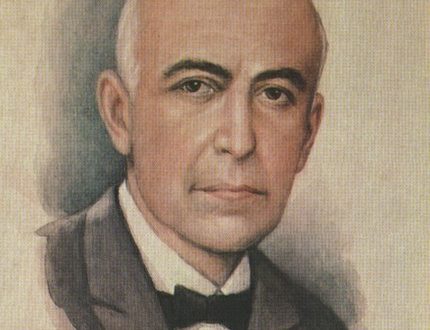
Veljo Tormis (Veljo Tormis) |
Veljo Tormis

To make the ancient heritage understandable and accessible to modern man is the main problem facing the composer today in his work with folklore. V. Tormis
The name of the Estonian composer V. Tormis is inseparable from contemporary Estonian choral culture. This outstanding master made a rich contribution to the development of contemporary choral music and opened up new expressive possibilities in it. Many of his searches and experiments, bright finds and discoveries were carried out on the fertile ground of adaptations of Estonian folk songs, of which he is an authoritative connoisseur and collector.
Tormis received his musical education first at the Tallinn Conservatory (1942-51), where he studied organ (with E. Arro, A. Topman; S. Krull) and composition with (V. Kappa), and then at the Moscow Conservatory (1951- 56) in the class of composition (with V. Shebalin). The creative interests of the future composer were formed under the influence of the atmosphere of musical life that surrounded him from childhood. Tormis’s father comes from peasants (Kuusalu, a suburb of Tallinn), he served as an organist in a village church in Vigala (West Estonia). Therefore, Velho was close to choral singing from childhood, he began to play the organ early, picking up chorales. The roots of his composer’s genealogy go back to the traditions of Estonian musical culture, folk and professional.
Today Tormis is the author of a huge number of works, both choral and instrumental, he writes music for theater and cinema. Although, of course, composing music for the choir is the main thing for him. Men’s, women’s, mixed, children’s choirs, unaccompanied, as well as with accompaniment – sometimes very unconventional (for example, shamanic drums or tape recording) – in a word, all the possibilities of sounding today, combining vocal and instrumental timbres, have found application in the artist’s studio. Tormis approaches the genres and forms of choral music with an open mind, with rare imagination and courage, rethinks the traditional genres of the cantata, the choral cycle, uses the new genres of the 1980th century in his own way. – choral poems, choral ballads, choral scenes. He also created works in completely original mixed genres: the cantata-ballet “Estonian Ballads” (1977), the stage composition of the old rune songs “Women’s Ballads” (1965). The opera Swan Flight (XNUMX) bears the stamp of the influence of choral music.
Tormis is a subtle lyricist and philosopher. He has a keen vision of beauty in nature, in man, in the soul of the people. His large epic and epic-dramatic works are addressed to large, universal themes, often historical ones. In them, the master rises to philosophical generalizations, achieves a sound that is relevant for today’s world. The choral cycles of the Estonian Calendar Songs (1967) are devoted to the eternal theme of the harmony of nature and human existence; Based on historical material, the Ballad about Maarjamaa (1969), the cantatas The Spell of Iron (recreating the rite of the spell of ancient shamans, giving a person power over the tools he created, 1972) and Lenin’s Words (1972), as well as Memories of the Plague » (1973).
Tormis’s music is characterized by clear figurativeness, often picturesqueness and pictorialism, which are almost always imbued with psychologism. Thus, in his choirs, especially in miniatures, landscape sketches are accompanied by lyrical commentary, as in Autumn Landscapes (1964), and vice versa, the intense expression of subjective experiences is pumped up by the image of the natural elements, as in Hamlet’s Songs (1965).
The musical language of Tormis’s works is brightly modern and original. His virtuoso technique and ingenuity allow the composer to expand the range of choral writing techniques. The choir is also interpreted as a polyphonic array, which is given strength and monumentality, and vice versa – as a flexible, mobile instrument of chamber sonority. The choral fabric is either polyphonic, or it carries harmonic colors, radiates a motionless lasting harmony, or, conversely, it seems to breathe, shimmer with contrasts, fluctuations in rarefaction and density, transparency and density. Tormis introduced into it writing techniques from modern instrumental music, sonorous (timbre-colorful), as well as spatial effects.
Tormis enthusiastically studies the most ancient layers of Estonian musical and poetic folklore, the work of other Baltic-Finnish peoples: Vodi, Izhorians, Vepsians, Livs, Karelians, Finns, refers to Russian, Bulgarian, Swedish, Udmurt and other folklore sources, drawing material from them for their works. On this basis, his “Thirteen Estonian Lyrical Folk Songs” (1972), “Izhora Epic” (1975), “Northern Russian Epic” (1976), “Ingrian Evenings” (1979), a cycle of Estonian and Swedish songs “Pictures from the Past of the Island Vormsi” (1983), “Bulgarian Triptych” (1978), “Viennese Paths” (1983), “XVII Song of the Kalevala” (1985), many arrangements for the choir. Immersion in the broad layers of folklore not only enriches Tormis’s musical language with soil intonation, but also suggests ways of processing it (textural, harmonic, compositional), and makes it possible to find points of contact with the norms of modern musical language.
Tormis gives special significance to his appeal to folklore: “I am interested in the musical heritage of different eras, but most of all, ancient layers that are of particular value … It is important to convey to the listener-spectator the peculiarities of the people’s worldview, the attitude to universal values, which is originally and wisely expressed in folklore” .
The works of Tormis are performed by leading Estonian ensembles, among them the Estonian and Vanemuine Opera Houses. The Estonian State Academic Male Choir, the Estonian Philharmonic Chamber Choir, the Tallinn Chamber Choir, the Estonian Television and Radio Choir, a number of student and youth choirs, as well as choirs from Finland, Sweden, Hungary, Czechoslovakia, Bulgaria, Germany.
When the choir conductor G. Ernesaks, the elder of the Estonian composer school, said: “The music of Veljo Tormis expresses the soul of the Estonian people,” he put a very specific meaning into his words, referring to the hidden origins, the high spiritual significance of Tormis’s art.
M. Katunyan





